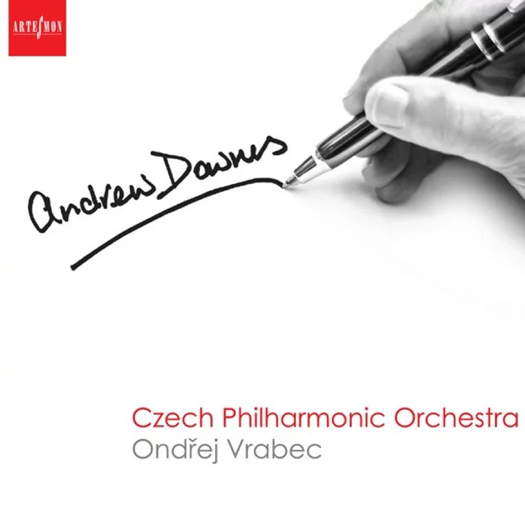 DISCUSSION: What is a work? John Dante Prevedini leads a discussion about The performing artist as co-creator, including contributions from Halida Dinova, Yekaterina Lebedeva, Béla Hartmann, David Arditti and Stephen Francis Vasta.
DISCUSSION: What is a work? John Dante Prevedini leads a discussion about The performing artist as co-creator, including contributions from Halida Dinova, Yekaterina Lebedeva, Béla Hartmann, David Arditti and Stephen Francis Vasta.
A Very Satisfying Evening
KEITH BRAMICH enjoys a charity concert in London
Robert McCarney's recent article Coming soon, maybe ... criticised classical concert programming as predictable, repetitive, showing none of the performers' personality, being devoid of modern music and suggesting that the art form is dead. While reading this article, I remembered that I had recently attended a concert which, without being explicitly 'modern', had shone in many ways, one of which was definitely its imaginative programming.
The concert I heard was at St James' Church Piccadilly in London, UK on Friday evening 31 May 2024 - a charity concert in aid of the Roy Castle Lung Cancer Foundation, which funds research into early diagnosis of lung cancer, supports everyone affected, raises awareness and challenges misconceptions about the disease. Roy Castle (1932-1994) was an English entertainer, singer and multi-instrumentalist. A non-smoker, he blamed his lung cancer diagnosis on passive smoking from playing jazz trumpet in smoky venues. Later, his widow campaigned for the British indoor smoking ban which came into force about twenty years ago.
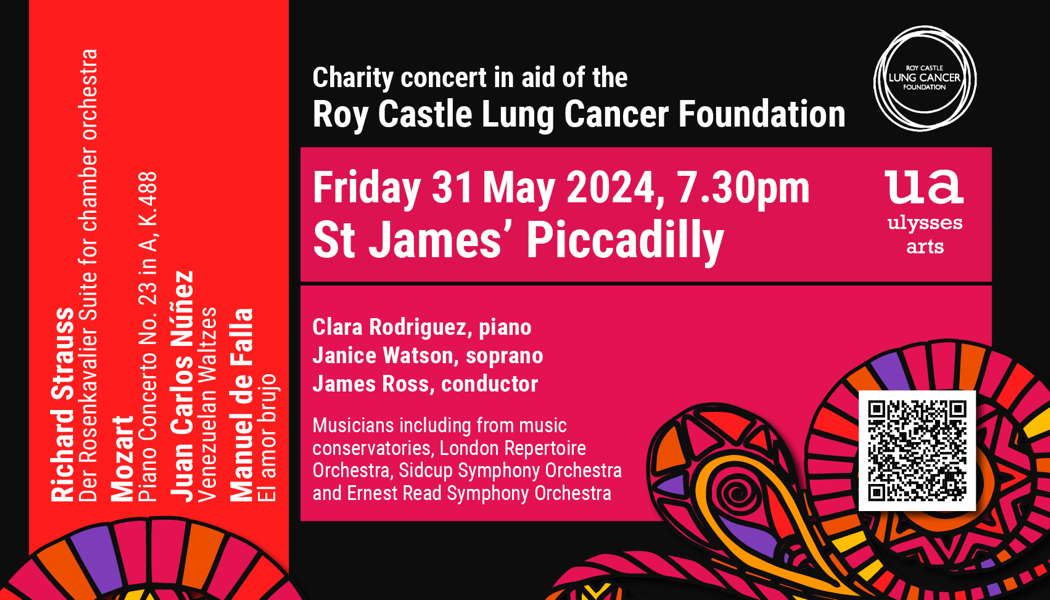
I became aware of this concert when British conductor James Ross, one of our guests for John Dante Prevedini's recent Improvisation in the classical world and beyond discussion session here at Classical Music Daily, mentioned it, commenting:
I'm giving a concert with the pianist Clara Rodríguez from Venezuela and soprano Janice Watson, and we're going to do Mozart A major concerto K 488 and Manuel de Falla's El amor brujo, and along with that it's going to start with Rosenkavalier Suite for chamber orchestra before the Mozart, and before the Falla there will be some Venezuelan waltzes arranged by a Venezuelan composer called Núñez ...
This prompted some discussion when another contributor Steve Vasta asked about the Richard Strauss Rosenkavalier arrangement. Beginning the programme, the Strauss suite was to be played in a rare arrangement by H H Higgs, Ross told us. Could this have been the British composer Henry Marcellus Higgs (1855-1929), I wonder? As top editor for the music publisher Chappells, he would certainly have had the opportunity to make and promote such an arrangement.
Ross' orchestra of thirty-five players, led by Tina Bowles, was drawn from members of the Royal Academy of Music and from various amateur orchestras around London, and made a very impressive sound - definitely at the top end of amateur performances. The Strauss/Higgs Rosenkavalier suite was a great and fascinating concert opener, with interesting percussion and other effects. It features several scenes from the 1911 Strauss opera, set in Vienna in 1740.
Were there any common threads linking all the works in this concert? Influences of Viennese waltzes can be heard throughout the Strauss, and so yes, as far as I'm aware, the two threads here were opera and dance, with each work linked to at least one of them.
James Ross is musical director of several orchestras in the UK, and he also has a significant presence conducting in various other countries. He has conducted many first performances of new works and he's also director of the record label and music consultancy Ulysses Arts.
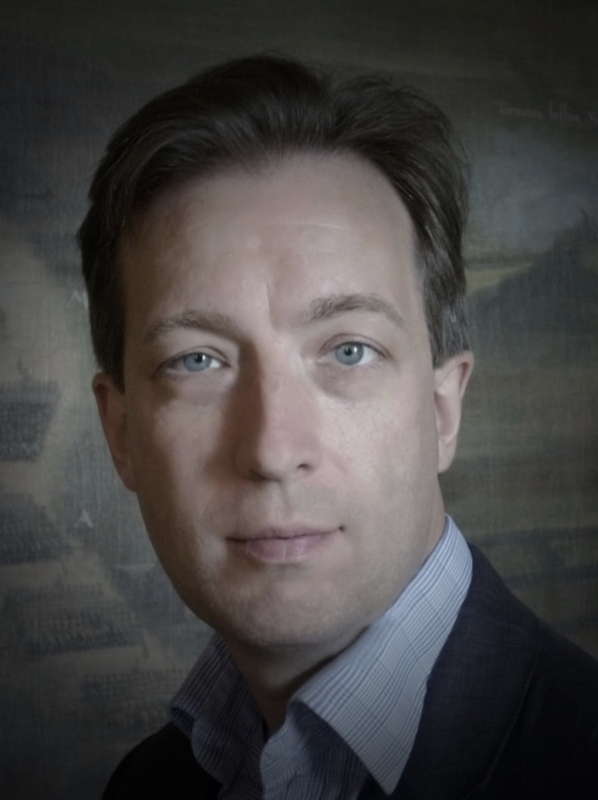
James Ross
Ross organised this event with Clara Rodríguez, who made her first appearance in a warm and sprightly account on St James Church's Fazioli piano of one of Mozart's most popular piano concertos - No 23 in A, K 488. I heard one or two tiny slips in the piano part here, but this is a very small price to pay for the thrill of live music making - if you need 100% accuracy, stay at home and listen to a recording. (Maybe I wouldn't have noticed had my seat not been almost closer than the soloist to some of the piano strings!)
In case you're wondering, the connection here with one of the threads mentioned above is that this concerto was written while Mozart was working on his opera The Magic Flute. The concerto's slow movement is seriously operatic in character, and the bubbly final Allegro assai has something of the feel of opera buffa.
Although she was born in Venezuela, Clara Rodríguez studied in London (and elsewhere) and is well known to London audiences for her concerts here. She also teaches at the Royal College of Music. She first appeared in this magazine's predecessor nearly twenty years ago, interviewed by the late Bill Newman in his fascinating and detailed feature, South American Belle.
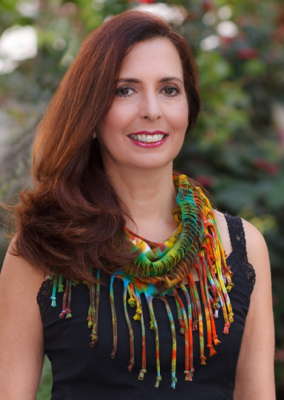
Clara Rodríguez
Clara Rodríguez next treated us to a selection of Venezuelan music, beginning with the simple Mi Teresita Waltz (1884) for solo piano by Caracas-born pianist, soprano, conductor and composer Teresa Carreño (1853-1917). The story of this piece is that it was written to accompany (in private) the composer's daughter Teresita's first dance steps, but later, having run out of encores at the end of a recital, she decided to play it in public, and this was so successful that she continued to play it hundreds of times at the end of her concerts.
Ross and his orchestral strings returned to accompany Rodríguez in selections from the Antología de Valses Venezolanos (Anthology of Venezuelan Waltzes) arranged by contemporary Venezuelan composer Juan Carlos Núñez (born 1947). This selection of three waltzes began with the nineteenth century Vals Venezolano (Venezuelan Waltz) by Rafael Saumell. This was followed by Núñez's own Retrato de Ramón Delgado-Palacios (Portrait of Ramón Delgado-Palacios), and the selection ended with Mi Aplauso (My applause) by the same Ramón Delgado-Palacios (1867-1902).
Clara Rodríguez is connected closely with this music - she gave the first performance of this anthology in Caracas. The music is highly dramatic and has a feeling of fantasy. In general, Venezuelan waltzes are based on the Viennese waltz tradition but with African and local South American rhythms added. (A common rhythm used is a dotted crotchet followed by a quaver then a crotchet: '123 1 12'.) They also tend to have an A-B-A structure, with a faster central section. The audience was informed during the concert that Juan Carlos Núñez was currently unwell, so I hope that by now he's back in good health.
Ending this section was Pajarillo (Little Bird) by Luisa Elena Paesano (1941-2019) - a piece in the 'Joropo' style - similar to a fandango - from the Venezuelan plains. Clara Rodríguez was joined for this by London-based Latin percussionist Wilmer Sifontes, originally from Caracas, who stole the show with what almost seemed like a conjuring trick, playing maracas and providing a physically dramatic and visual extra element to this intricate piano piece. (The physical effect was probably magnified due to my seat right in front of the Fazioli and Sifontes' performing space, and I could see that, before his performance, the percussionist set up his mobile phone to video himself. I imagine that it will have been a spectacular recording.)
Finally, with the piano now at the side of the orchestra, I had a clear view of everyone for the last work, which was music from Andalusia, Spain - the ballet El amor brujo (third version, 1924) by Manuel de Falla, which includes the famous Ritual Fire Dance. As with all the other orchestral contributions, this was held together by clear and inspiring conducting from James Ross.
The passionate vocal numbers were negotiated superbly in what, as far as I could tell, was excellent Spanish, by well-known British soprano Janice Watson.
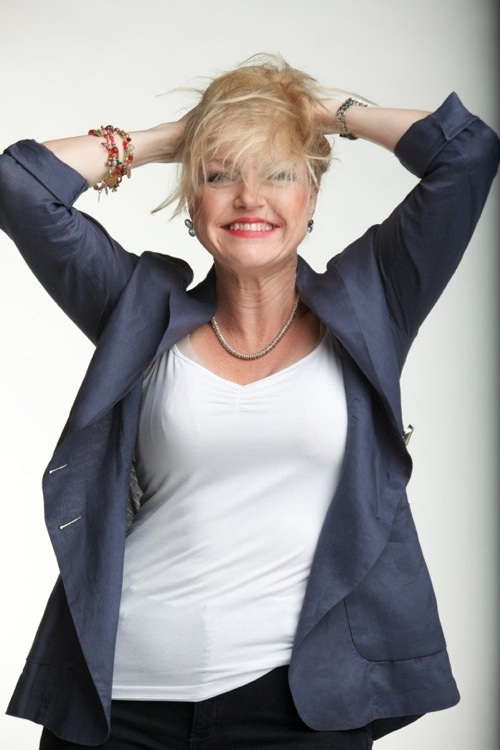
Janice Watson
The unusual mix of items, the guest soloists and the high standard of performance in this well-attended concert all came together to produce a very satisfying evening, and I noticed that a large proportion of the audience remained in the church, talking, for some time afterwards.
Copyright © 18 June 2024
Keith Bramich,
London UK



